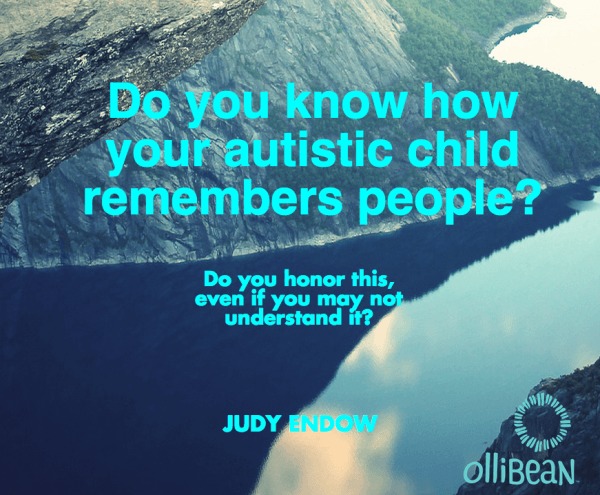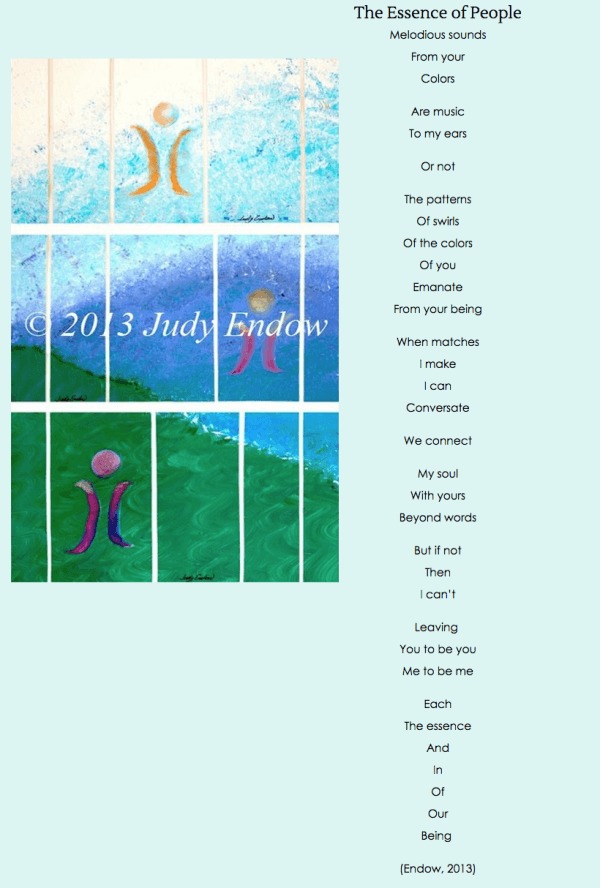My autistic neurology means that I am not good at picking up typical social cues, understanding complex social situations, automatically picking up meanings of idioms, or understanding the hidden curriculum that most others automatically pick up (Endow 2012). This means I often look naïve and gullible. The fact is I AM naïve and gullible when I try to use the social constructs of neuromajority folks to navigate the world around me.
When I was younger and deemed “in need of help” that “help” largely involved others trying to teach me to think and act as if I had a typically wired brain. I was never very good at it because no matter how many therapeutic social skills situations I availed myself of, because they were taught as if all participants had a neurotypical brain and my brain was not neurotypical, I mostly failed their learning agenda for me. My brain just plain works differently.
Here is an example: I rarely remember the same details about other people that most folks do. I remember the visual perception that came to me during an interaction, whether or not I was personally a part of that interaction. I pick up much information through seeing the sounds and movements of color people generate along with changes in the air space surrounding them as they speak and go about their business.
When I match the colors of others I can carry on a conversation. When our colors don’t match, the conversation usually doesn’t go well. I did not realize this way of perceiving and understanding the essence of people was not shared by others until recent years.
All through my life when others have tried to help me it has been minimally helpful to me. They would most often try to get me to understand the world in the way they understand the world. It was helpful information to know how others were thinking because it explained their behavior. Even so, learning how typical people think does not help me to then be able to think in their way.
Now that you have read the above example of one way I think visually by incorporating the sound and movement of colors people generate do you understand it? Probably so. And now that you understand it how I think can you stop thinking the way you think and start thinking the way I think? Probably not!
The way we think is important because it is how we make decisions. It is part of everyday life. In my work life I might avoid business interactions with someone because they have ugly colors with sticky tentacles moving sneakily toward me. A typical person, who’s thinking is language-based, may understand that this potential business partner is devious and less than ethical in his practices. In essence, we both understood the same thing, but I had no way to explain it unless I translated my visual thinking into words. Visual is my native language; it is how I interface with the world around me and how I innately understand people.
Just like it would not be helpful for you to adopt my ways which are foreign to you, please understand that it is not helpful for me to always adopt your foreign ways when making decisions about people. We think differently and that is okay with me. I look forward to the day that my way of thinking is okay with the rest of the world.
In the meantime, if you are a parent of an autistic child, perhaps you might find it useful to ponder these questions:
Do you know how your autistic child remembers people?
Do you know what is important to your autistic child about other people?
Do you understand how your autistic child decides who to interact with and who not to interact with?
Do you honor this, even if you may not understand it? Many autistic children will not be able to explain to you how they think because it is not word based. You do not necessarily need to understand how your child thinks in order to honor it.
Note: Here is my first attempt to translate my visual thinking on the essence of people. After I translated my visual thinking into this sketchy language I was then able to go the next step to make a paragraph of words (which is the indented paragraph above that starts with “Here is an example”}. This is how my visual thinking gets translated to words. Once translated to words I can then speak the words. Today I can do this three-part translation
1. visual thought,
2. sketchy words,
3. paragraph words
to be able to speak my thought. I didn’t know until recently that most people do not need to do a three-step translation before speaking their thoughts. Most of the time these days, after decades of practice, my speaking appears quite fluid, though sometimes a delay is still apparent. It is often hard to translate because the world of English words is much more limited than my visual thought. It is like being confined to a limited choice board when what I really want isn’t an available choice.
REFERENCES
Endow, J. (2012). Learning the Hidden Curriculum: The Odyssey of One Autistic Adult. Shawnee Mission, KS: AAPC Publishing.
Endow, J. (2006). Making Lemonade: Hints for Autism’s Helpers. Cambridge, WI: CBR Press.
Endow, J. (2013). Painted Words: Aspects of Autism Translated. Cambridge, WI: CBR Press.
Endow, J. (2009). Paper Words: Discovering and Living With My Autism. Shawnee Mission, KS: AAPC.
Endow, J. (2009). The Power of Words: How we think about people with autism spectrum disorders matters! Shawnee Mission, KS: AAPC.
Endow, J. (2009). Outsmarting Explosive Behavior: A Visual System of Support and Intervention for Individuals With Autism Spectrum Disorders. Shawnee Mission, KS: AAPC.
Endow, J. (2010). Practical Solutions for Stabilizing Students With Classic Autism to Be Ready to Learn: Getting to Go. Shawnee Mission, KS: AAPC.
Myles,, B. S., Endow, J., & Mayfield, M. (2013). The Hidden Curriculum of Getting and Keeping a Job: Navigating the Social Landscape of Employement. Shawnee Mission, KS: AAPC Publishing.
 JUDY ENDOW, MSW
JUDY ENDOW, MSW
Judy Endow, MSW is an autistic author, artist and international speaker on a variety of autism related topics. Read more from Judy on Ollibean here and on her website www.judyendow.com.








Thank you for this fascinating perspective. Two of my lovely children are on the spectrum and one in particular I feel speaks “English as a second language”. She was delayed in picking it up, but now seems to enjoy the funny sounds and quirks of it, the peculiar idiom people use, even the spelling of written English (which she has been teaching herself to read). However, when she is having ‘big feelings’, using language to express herself is really hard, just like when you are speaking in a language other than the one you were born to. She struggles to find words, or find any reason to use words. She goes from being amazingly articulate for her age to grrrrrrrrrrrrrs of frustration or despair. I will be curious to discuss her ‘native language’ with her when she gets older. Perhaps her perspective will be like yours? Really interesting. Thanks so much.
I have been fighting to get my son ASL instruction because this is how he chooses to communicate. The professionals, particularly school administrators want him forced to use AAC. This helps me to understand and verbalize how to argue his needs. Even an AAC requires translation whereas thought to ASL is visual thought to visual expression. Thank you. BTW, I LOVE your poem, “The Essence of People.”